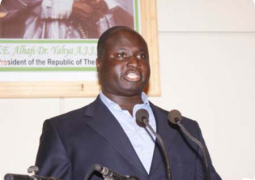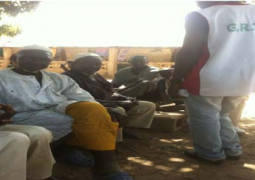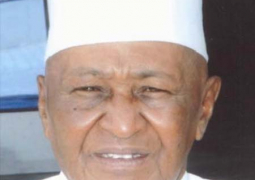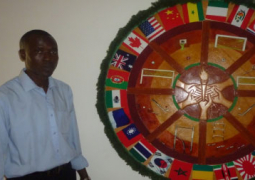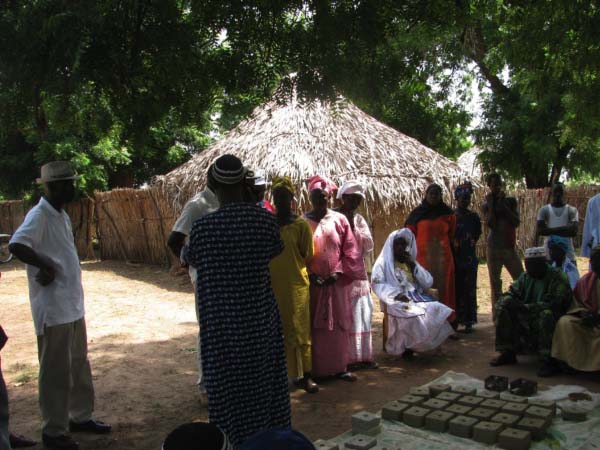
According
to the United Nations Educational, Scientific and Cultural Organization
(UNESCO), The Gambia has been predisposed to severe drought since late 1960s of
which the worst one lasted from 1968 – 1974.
The
Gambia National Adaptation Programme of Action on Climate Change also indicated
that the combined effects of relatively low temperatures in 2004 and little
adaptive capacities of livestock farmers resulted in loss of sheep, goats and
cattle.
Furthermore,
the long drought of 2010/2011, which resulted in the death of many farm
animals, and a severe food crisis are typical examples of extreme climate
change related events confronting the livestock farmers in this country.
Fluctuations
in temperature and annual precipitation as a result of global warming may also
pose threat to survival of farm animals and their owners especially in the
lowland and coastal areas of The Gambia.
Confronted
with the daunting challenge of variability in climatic conditions, there is
likelihood that livestock farmers, particularly the women groups will
experience more difficulties over the next 20 years, if certain actions are not
properly taken now. It is then vital for all stakeholders to make concerted
effort with regard to meeting food security, poverty alleviation and improved
adaptation strategies for all the individuals and groups who will be affected
by the effects of climate change.
Being
naturally endowed to play dual roles in their entire life cycle, women are
generally known for active involvement in reproductive and productive
activities which are necessary for maintaining the continued existence of human
beings on earth. Women’s productive roles in the agricultural sector are
particularly remarkable. Concerning the Gambian women farmers, they have over
the years been able to distinguish themselves beyond the borders of this
country. Their impacts in ensuring national food security are widely recognized
across the globe by international donors, non-governmental organizations (NGOs)
and philanthropists who often support their various agricultural activities.
These women who are organized into groups called ‘kafo’ usually engage
themselves in an all-year-round vegetable production in both rural and
peri-urban areas. Not only that, some
exceptional Gambian women farmers have been able to prove beyond doubt their
prowess and business acumen in small-scale livestock production enterprises. A
typical example of this assertion is Ajia Sainabou Ceesay, a widow who is 63
years old and lives at Ballanghar Pallen in the Central River Region. In her
own words “I was able to pay for Hajj by myself and this is as a result of
rearing sheep and goats”. She also attributed her ability to buy food for the
family and pay children school fees to income earned from sales of
livestock.
Despite
such somewhat success stories, it is evident that the Gambian women farmers,
like most of their counterparts in other developing countries of Africa, are
still confronted with certain socio-economic, cultural and climate-related
challenges. To tackle the menace of climate change on livestock production and
their owners, we need to carefully look inward for potential solutions before
thinking of external interventions.
Importantly,
we need to investigate and document different ways through which some livestock
farmers including the women have been able to traverse years of unfavourable
climatic situations and yet remain productive above average.
Climate-smart
and sustainable agricultural practices used by a few farmers need to be
improved and then disseminated as good practices to other farmers for adoption.
Two key areas to target in this regard are the use of local breeds and feeding
systems.
The
Gambia is naturally endowed with some climate-resilient local breeds of
ruminant. A survey carried out in 2011 in addition to many other scientific
publications have proven that the N’Dama cattle which originated from Fouta
Djallon in the Republic of Guinea is highly endemic and adaptable to the
prevailing climatic conditions of this country. Although the breed is
relatively small in size when compared with the Gobra cattle breed from
neighbouring Senegal but its importance in adapting to the effects of climate
change cannot be over-emphasized.
Like
the N’Dama cattle, there are also the Djallonke sheep and West African Dwarf
goat which are resistant to a common animal disease called trypanosomosis.
It is unfortunate that our knowledge of the
full potentials of locally adapted breeds is still limited. To this effect,
genetic improvement programme is currently going on at the International
Trypanotolerance Centre (ITC) through the open nucleus breeding programme which
started in 1994. However, this programme is still confronted by inadequate
human and financial resources.
Meanwhile,
a lot of opportunities can be grasped by men and women livestock farmers if
they are well informed, motivated and also enhanced to keep those animals which
require little feed and veterinary services. ITC, National Agricultural
Research Institute (NARI), Department of Livestock Services, and the livestock
unit in University of The Gambia (UTG) being strategically positioned for
animal breeding, genetic improvement, reproductive physiology, livestock
research and extension need to be capacitated and funded to deliver substantial
outputs for farmers. Collaboration of those institutions with NGOs and
organizations focusing on women and environmental issues are also important in
this regard.
Given
that the grazing areas will diminish under the scenario of increased human
population and crop production, there is a need to think of how the commonly
practiced traditional system of livestock production will be affected. Both men
and women livestock farmers will need to choose among many options which
include keeping animals in ranches, mixed crop-livestock systems, pastoral
system, or a complete change to intensive production systems. Whichever option
they may settle for, the key point still remains that we need to make
inventories of the locally available feed resources, classify them according to
their nutritional value, abundance and availability at different times of the
year. This will involve some degrees of trained scientists and financial
resources which are presently not adequate.
The
Gambian government through the Ministry of Agriculture and other relevant
agencies needs to capacitate Department of Livestock Services and the
Department of Agriculture by training their staff in relevant fields of study.
Also, NARI and UTG need to be strengthened to undertake quality researches in the
areas of animal nutrition, epidemiology, and quality feed processing, storage
and analysis. Farmer-focused extension services need to be well packaged to
reach the women livestock farmers who are sometimes not fairly present when
their male counterparts are being trained.
Therefore, training and extension services should be ‘genderly’ designed
to take into account the different needs and vulnerabilities of male and female
farmers in the context of climate change.
The
annually recurring incident of bush burning is another threat to successful
livestock farming under the traditional system of The Gambia. Although this
unwelcome practice is not directly caused by climate change, it should be
emphasized that bush contains a lot of resources which can enhance livestock
farmers’ adaptation to climate change.
Also,
bush burning whether intentional or accidental is neither profitable to the
person involved nor the people whose livelihoods are tied to the resources in
the bush. If the loss of natural resources and changes in the ecosystem through
bush burning were to be quantified in monetary units, it will sum up to
millions of Gambian Dalasis. This money could have been otherwise useful for
socio-economic and infrastructural development of rural areas. Thanks to the
Gambian government for a strong commitment to environmental issues and
likewise, the Ministry of Environment, Climate Change, Fisheries, Forestry,
Water and Wildlife for the initiative of commemorating the National
Anti-Bushfire Day on 10th January of every year. This effort will sensitize the
Gambian populace and help to preserve the scanty feed resources such as grasses
and shrubs which our livestock and their owners will need to desperately depend
upon during the critical period of climate change.
On
the political arena, the National Policy for the Advancement of Gambian Women
(1999-2009) which metamorphosed to Gender and Women Empowerment Policy
(2010-2020) is remarkably important for providing a road map on how to enhance
women livestock farmers’ resilience to climate change. So also is the
Agriculture and Natural Resource Policy (2010-2015) which is presently being
reviewed and updated under the auspices of Ministry of Agriculture.
Importantly, there is a great responsibility on every stakeholder to ensure
that The Gambia National Adaptation Programme of Action is well implemented.
Enhancing
women livestock farmers’ adaptation strategies is worthwhile because the group
represents one-third of low-income livestock keepers in the developing
countries.
Consequently,
helping rural and agro-pastoral women farmers to improve their adaptation
strategies will have a spill-over and positive effects on the entire well-being
and nutrition of their family members. It will also enhance economic
development of this country.
This
article is an output of a desk-based study under the African Climate Change
Fellowship Programme which is financed by the International Development
Research Centre.
The
author (Olawale F. Olaniyan) can be contacted through: ofolaniyan@hotmail.com;
3701318


